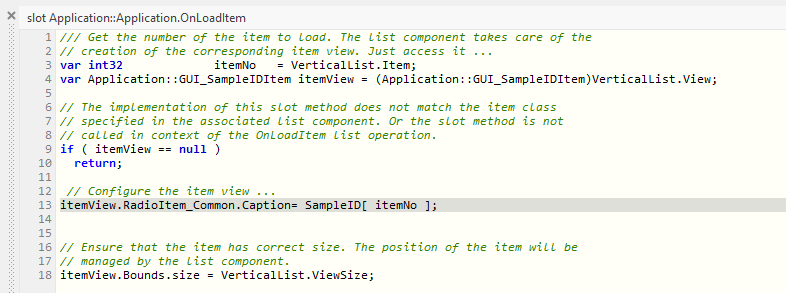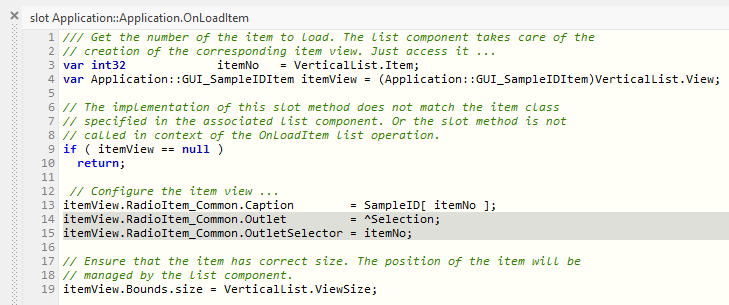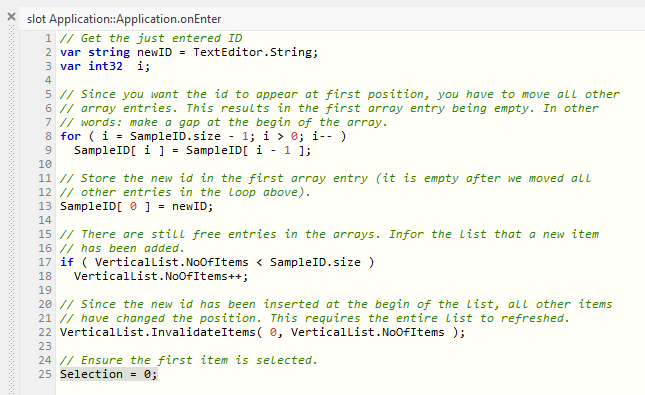Hello Sazna,
modifying the InvalidateItems() will not provide the solution. The reason is: the Vertical List does not store nor manage the data. It is just a view. You have to create the data storage by yourself and implement OnLoadItem method to pick the requested data from the data storage. The approach is in fact very simple and straight forward. Following modifications are required in your project:
1. Correct OnLoadItem slot method. The method should load the data from your storage (the array), not the data stored actually in Editor. Note the modification in the highlighted row:

2. Remove the Counter variable. According to the description of your application, it will not be necessary anymore.
3. Reimplement the method OnEnter as shown below. The method inserts the just entered Editor text at the first position of the array. To achieve this, all other array entries are moved. Then the Vertical List is notified to refresh its appearance:

So far the loading of items. Concerning the selection within the Vertical List. Usually, the list implement a selection mechanism to select one item. In the component implementing the item class, you can then react to state changes of the component and display it in selected or not selected state.
In your implementation you have used the Radio Button within the item. The state of the Radio Button has however no relation to the selection. You could redesign the GUI_SampleIDItem class. Or you continue using the Radio Button. In this case, however, you need the radio buttons to be grouped together. Then when one Radio Button is selected, the preceding selection is removed:
4. Add a property to the component containing the Vertical List. The value of this property will correspond to the number of the actually selected Radio Button. For example:

5. Once more modify the OnLoadItem method, so the Radio Buttons are connected to the property. Each Radio Button will receive the corresponding number. Note the highlighted rows:

6. In the OnSetSelection method corresponding to the above mention property add code to broadcast notifications when this property is changed. Note the highlighted row:

7. Once more modify the OnEnter slot method so that after adding a new id, the selection is reset to 0. Note the highlighted row:

So far the necessary modifications. The entire project can be found here.
I hope it helps you further.
Best regards
Paul Banach